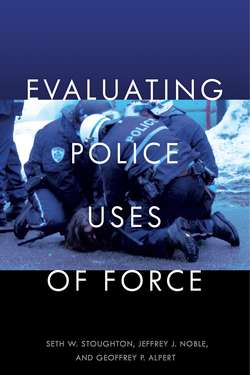Читать книгу Evaluating Police Uses of Force - Seth W. Stoughton - Страница 13
На сайте Литреса книга снята с продажи.
Civil “Excessive Force” Litigation under 42 U.S.C. § 1983 and Bivens
ОглавлениеWhen an officer uses force against an individual, the subject can file a lawsuit alleging that the officer violated the Fourth Amendment. The Fourth Amendment itself sets out the substantive right to be free from unreasonable seizures, but it does not provide what is known as a “cause of action”—the basis of the legal argument that a plaintiff makes when filing a lawsuit. Instead, federal civil lawsuits are authorized by a federal statute and a Supreme Court case.
The federal statute, 18 U.S.C. § 1983, states, in relevant part:
Every person who, under color of any statute, ordinance, regulation, custom, or usage, of any State or Territory or the District of Columbia, subjects, or causes to be subjected, any citizen of the United States or other person within the jurisdiction thereof to the deprivation of any rights, privileges, or immunities secured by the Constitution and laws, shall be liable to the party injured in an action at law, suit in equity, or other proper proceeding for redress[.]
That statute applies to state and local officials, including police officers, but not to federal officials. A Supreme Court case, Bivens v. Six Unknown, Named Agents of Federal Bureau of Narcotics,5 held that federal officers were similarly subject to liability for constitutional violations, including Fourth Amendment violations. A complete discussion of the fascinating history and many nuances of § 1983 and Bivens is beyond the scope of this book. For our purposes, it suffices to say that, together, they potentially render liable any police officer who uses or abuses their authority in ways that violate an individual’s constitutional rights, including uses of force that violate the Fourth Amendment.
Confusingly, a plaintiff can bring a § 1983 claim—that is, a claim brought under federal law—in either federal or state court.6 Either way, the court will have to apply the constitutional standard to determine whether the officer’s actions violate the Fourth Amendment. The plaintiff in such a suit, if successful, can ask the court to award different remedies. The three most common remedies are compensatory damages, punitive damages, and injunctive relief.
Compensatory damages are a monetary payment “intended to redress the concrete loss that the plaintiff has suffered by reason of the defendant’s wrongful conduct.”7 Compensatory damages are awarded to cover the costs of physical injuries and psychological injuries as well as tangible harms (such as damaged property) and intangible, but quantifiable harms (such as lost earnings).
Punitive damages are intended to punish a defendant’s misconduct and deter the defendant, and others in the defendant’s position, from engaging in such actions in the future. Not every case in which compensatory damages are awarded will also result in punitive damages; the Supreme Court has strongly suggested that courts can award punitive damages only when an officer’s conduct is malicious, intentional, or callously indifferent to the plaintiff’s rights.8
In addition to monetary awards from compensatory or punitive damages, a plaintiff may also request injunctive relief. Under certain circumstances, a court can issue an injunction that prohibits an officer or agency from engaging in certain actions (such as an order to not use a particular weapon or technique) or, less frequently, an injunction that requires an officer or agency to engage in certain actions (such as an order for officers to go through particular training or adopt a particular use-of-force policy).
In short, 42 U.S.C. § 1983 and Bivens permit a private plaintiff—or, in rare cases, a class of plaintiffs—to bring a civil suit against local, state, or federal officers alleging violations of their constitutional rights, including the Fourth Amendment right to be free from unreasonable seizures.
